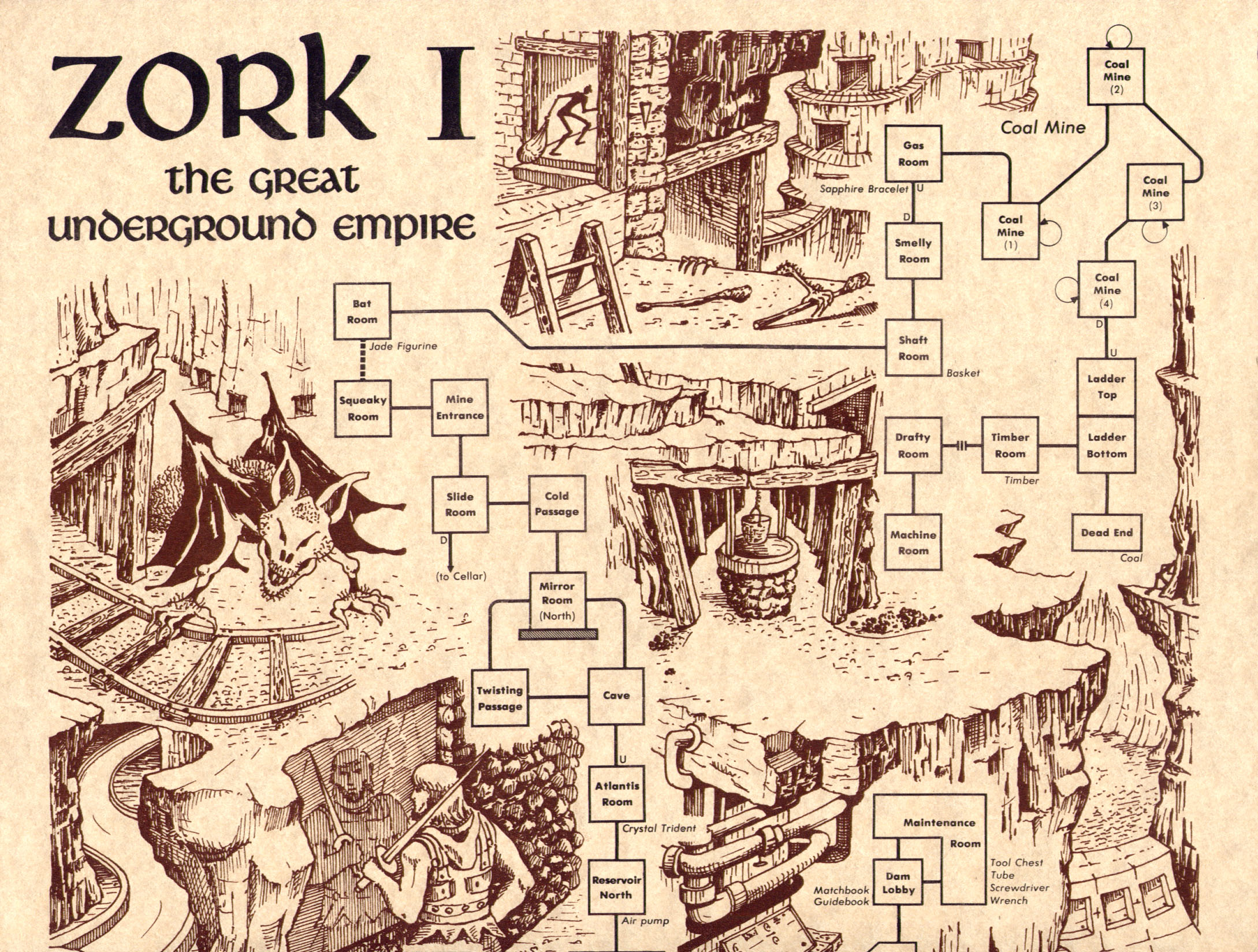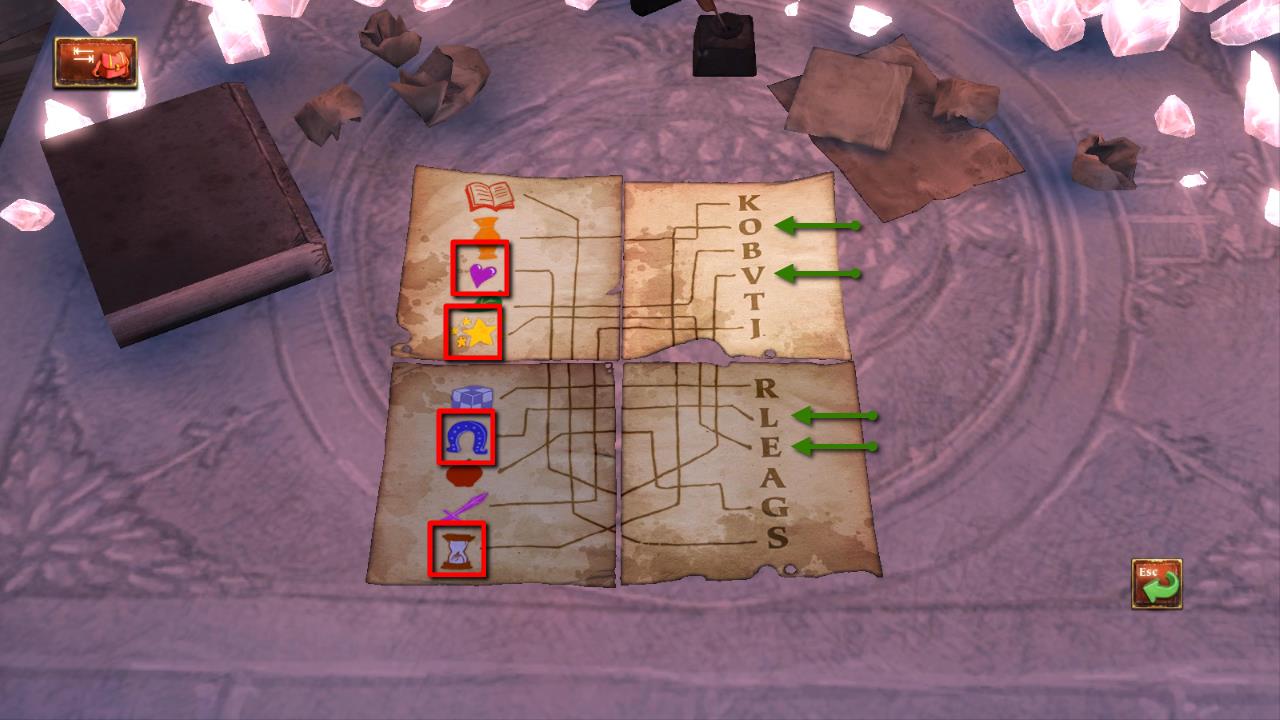Escape Room Puzzles from Video Games
04/17/2017
My first experience with a computer adventure game was Zork. I played Zork on a Commodore-64 back in the 80’s. It was already a classic. It only had a command line interface and originally was developed for midsize (DEC PDP) computers on college campuses.
You entered commands at the prompt, similar to a DOS command line prompt. It understood “go north”, “pick up knife”, “drink potion”, “open door”. It had all sorts of puzzles and mysteries that needed to be solved. Like a book, it left much of the visualization to your imagination.

Figure 1-1 (A map of the Zork empire)
One puzzle I remember that many other games had copied in later years was the “slide the paper under the door and poke the key out from the opposite side of the keyhole.” Basically you are locked behind a door and can see something in the keyhole. You assume it is the key. You happen to find a newspaper and stick in under the opposite side of the door and poke loose the key so it drops on the paper so you can retrieve it by pulling it back to your side of the door. You then unlock the door using the key.
King's Quest was one of the first graphic adventure games that seemingly had an entire production crew of writers, illustrators, similar to a movie production.. It had an elaborate backstory and quest (mission). A lot of the game was inspired by fairy tales and many of the puzzle solutions were inspired by these tales. A player with prior knowledge of the tales would have an advantage. But if the player didn’t have any knowledge of them, they could figure things out with other clues within the game.

Figure 1-2 (a puzzle in King's Quest)
Video games have changed graphically over the years, but the basic components remain the same. A good backstory, the idea of mystery or secrets that need to be solved, challenging puzzles, and a feeling of accomplishment.
Escape Rooms add the element of time or urgency to the game play. Not everyone wins in a 60 minute time frame.